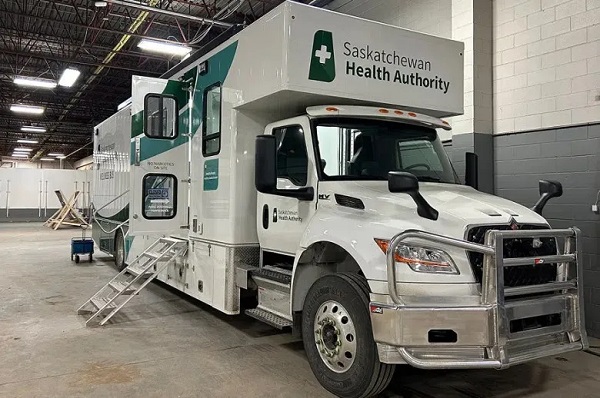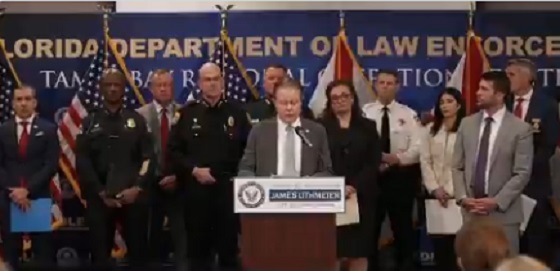Addictions
Why the U.S. Shouldn’t Copy Canada’s Experiment with Free Drugs

By Adam Zivo
Harm-reduction activists claim evidence supports “safer supply,” but their studies don’t back that up.
Canada, where I call home, is the only jurisdiction in the world that hands out free addictive drugs to addicts. Under the “safer-supply” policy, Canadian health authorities distribute hydromorphone—an opioid as potent as heroin—as well as, to a lesser degree, oxycodone, pharmaceutical fentanyl, and mild stimulants. These drugs are provided at no cost and, until recently, rarely had to be consumed under medical supervision.
Some American harm-reduction activists claim that Canada’s experience—and studies of it—prove that safer supply saves lives. In reality, the studies they cite are deeply flawed. They rely on weak methodologies, including biased interviews and self-reported surveys, and fail to isolate the effects of safer supply from those of other interventions. U.S. policymakers should not let such shaky evidence justify similarly misguided policies at home.
Canada piloted safer supply in 2016 with no evidence that it worked. Some clinical trials suggested that administering pharmaceutical-grade heroin under careful medical supervision could stabilize severely addicted drug users. But advocates took this evidence and claimed that it supported their safer-supply experiment, despite crucial dissimilarities—the most important being the lack of witnessed consumption.
Over the following years, radical activist-scholars produced numerous evaluations and studies declaring that safer supply “saves lives” and improves recipients’ quality of life. As Canada expanded program access nationwide in 2020, policymakers latched on to this “evidence-based” experiment, condemning critics as anti-science.
This evidence is predominantly composed of qualitative studies, which rely not on data but on interviews with safer-supply recipients and providers. The interviewees naturally say that the program is wonderful and has few downsides. Advocates then frame these responses as objective evidence of success.
Notably, the studies never reach out to those who might provide negative evaluations of safer supply—doctors, addicts uninvolved with these programs, or individuals newly in recovery. Addiction experts throughout Canada have dismissed these studies as glorified customer testimonials.
Some studies involve surveys, converting patient responses into quantitative data that can be statistically analyzed. For example, the London InterCommunity Health Centre (LIHC), one of Canada’s leading safer-supply prescribers, publishes survey-based evaluations that claim approximately half of its patients reduced their fentanyl consumption after enrollment. This quantitative method does not change the unreliability of self-reported data, however, and there’s nothing that keeps patients from giving false answers if it suits their interests.
A 2024 study conducted by Brian Conway, director of Vancouver’s Infectious Disease Centre, indirectly validated these criticisms. The study distributed surveys to 50 of his safer-supply patients and then collected urine samples immediately afterward. Conway discovered that, while only 4 percent of these patients self-reported diverting (selling or trading) all their safer-supply hydromorphone, 24 percent had no hydromorphone in their urine. That suggests a significant portion of patients lied on their surveys.

A few studies use administrative health data to show that enrollment in federally funded safer-supply programs correlates with improved health outcomes. But these studies make no effort to determine whether the free drugs themselves are responsible. The real driver could be the extensive wraparound services the programs offer, such as housing assistance and access to primary care. It’s like giving an obese man a personal trainer and a daily slice of cake—and then, when he loses weight, crediting the cake.
Last year, the British Columbia Centre for Disease Control (BCCDC) published a study in the British Medical Journal examining the health data of 5,882 drug users over an 18-month period between 2020 and 2021. The study found that individuals who received safer-supply opioids were 61 percent less likely to die over the following week than those who didn’t. This number rose to 91 percent for those receiving safer-supply opioids for four or more days in a single week.
Encouraging, right? But not so fast. When a team of seven addiction physicians reviewed the study, they discovered that the researchers misrepresented their data. Safer-supply patients are often co-prescribed traditional addiction medications, such as methadone and Suboxone, that have long been proven to reduce overdoses and deaths (these medications are often referred to as opioid agonist therapy, or OAT). The study data showed that safer-supply patients who did not also receive OAT medications were just as likely to die as those who did not get safer supply. In other words, the benefits that the BCCDC researchers touted were likely driven primarily by OAT, not safer supply.
The study data also showed no significant mortality reductions after one year of accessing safer supply. One wonders why the researchers chose to fixate on the one-week follow-up numbers.
Most recently, a study published in JAMA Health Forum found that, between 2020 and 2022, British Columbia’s safer-supply policy was associated with a 33 percent increase in opioid hospitalizations and no change to drug-related mortality. The researchers arrived at this conclusion by comparing the province’s publicly available health data with data from a control group made up of a handful of other Canadian provinces. The study raised further doubts about safer supply’s scientific basis.
Over the past two years, Canadian policymakers have openly, if reluctantly, acknowledged that safer supply is not as well-supported as they once claimed. British Columbia’s 2023 safer supply fentanyl protocols clearly state, for example, that “there is no evidence available supporting this intervention, safety data, or established best practices for when and how to provide it.” Similarly, the province’s top doctor released a report in early 2024 admitting that the experiment is “not fully evidence based.” Just last autumn, the Canadian Research Initiative in Substance Matters acknowledged in a major presentation that safer supply is supported by “essentially low-level evidence.”
This about-face has been hastened by investigative media reports confirming that safer-supply drugs were being diverted to the black market, enriching organized crime and corrupt pharmacies in the process. Public support for the policy has apparently declined, as once-taboo criticism becomes normalized among Canadian politicians and commentators. The Canadian federal government has now quietly defunded its safer-supply programs (though independent prescribers still operate), while British Columbia mandated earlier this year that all safer-supply drugs be consumed under supervision.
Harm-reduction activists nonetheless maintain that the blowback against safer supply represents a “moral panic,” and that politics is overriding evidence-based policymaking. “Safer supply saves lives! Follow the science!” they insist. International policymakers, especially in the United States, should see through these misrepresentations.
The Bureau is a reader-supported publication.
To receive new posts and support my work, consider becoming a free or paid subscriber.
Invite your friends and earn rewards
Addictions
New RCMP program steering opioid addicted towards treatment and recovery

News release from Alberta RCMP
Virtual Opioid Dependency Program serves vulnerable population in Red Deer
Since April 2024, your Alberta RCMP’s Community Safety and Well-being Branch (CSWB) has been piloting the Virtual Opioid Dependency Program (VODP) program in Red Deer to assist those facing opioid dependency with initial-stage intervention services. VODP is a collaboration with the Government of Alberta, Recovery Alberta, and the Alberta RCMP, and was created to help address opioid addiction across the province.
Red Deer’s VODP consists of two teams, each consisting of a police officer and a paramedic. These teams cover the communities of Red Deer, Innisfail, Blackfalds and Sylvan Lake. The goal of the program is to have frontline points of contact that can assist opioid users by getting them access to treatment, counselling, and life-saving medication.
The Alberta RCMP’s role in VODP:
- Conducting outreach in the community, on foot, by vehicle, and even UTV, and interacting with vulnerable persons and talking with them about treatment options and making VODP referrals.
- Attending calls for service in which opioid use may be a factor, such as drug poisonings, open drug use in public, social diversion calls, etc.
- Administering medication such as Suboxone and Sublocade to opioid users who are arrested and lodged in RCMP cells and voluntarily wish to participate in VODP; these medications help with withdrawal symptoms and are the primary method for treating opioid addiction. Individuals may be provided ongoing treatment while in police custody or incarceration.
- Collaborating with agencies in the treatment and addiction space to work together on client care. Red Deer’s VODP chairs a quarterly Vulnerable Populations Working Group meeting consisting of a number of local stakeholders who come together to address both client and community needs.
While accountability for criminal actions is necessary, the Alberta RCMP recognizes that opioid addiction is part of larger social and health issues that require long-term supports. Often people facing addictions are among offenders who land in a cycle of criminality. As first responders, our officers are frequently in contact with these individuals. We are ideally placed to help connect those individuals with the VODP. The Alberta RCMP helps those individuals who wish to participate in the VODP by ensuring that they have access to necessary resources and receive the medical care they need, even while they are in police custody.
Since its start, the Red Deer program has made nearly 2,500 referrals and touchpoints with individuals, discussing VODP participation and treatment options. Some successes of the program include:
- In October 2024, Red Deer VODP assessed a 35-year-old male who was arrested and in police custody. The individual was put in contact with medical care and was prescribed and administered Suboxone. The team members did not have any contact with the male again until April 2025 when the individual visited the detachment to thank the team for treating him with care and dignity while in cells, and for getting him access to treatment. The individual stated he had been sober since, saying the treatment saved his life.
- In May 2025, the VODP team worked with a 14-year-old female who was arrested on warrants and lodged in RCMP cells. She had run away from home and was located downtown using opioids. The team spoke to the girl about treatment, was referred to VODP, and was administered Sublocade to treat her addiction. During follow-up, the team received positive feedback from both the family and the attending care providers.
The VODP provides same-day medication starts, opioid treatment transition services, and ongoing opioid dependency care to people anywhere in Alberta who are living with opioid addiction. Visit vodp.ca to learn more.
“This collaboration between Alberta’s Government, Recovery Alberta and the RCMP is a powerful example of how partnerships between health and public safety can change lives. The Virtual Opioid Dependency Program can be the first step in a person’s journey to recovery,” says Alberta’s Minister of Mental Health and Addiction Rick Wilson. “By connecting people to treatment when and where they need it most, we are helping build more paths to recovery and to a healthier Alberta.”
“Part of the Alberta RCMP’s CSWB mandate is the enhancement of public safety through community partnerships,” says Supt. Holly Glassford, Detachment Commander of Red Deer RCMP. “Through VODP, we are committed to building upon community partnerships with social and health agencies, so that we can increase accessibility to supports in our city and reduce crime in Red Deer. Together we are creating a stronger, safer Alberta.”
Addictions
Saskatchewan launches small fleet of wellness buses to expand addictions care

By Alexandra Keeler
Across Canada, mobile health models are increasingly being used to offer care to rural and underserved communities
Saskatchewan has launched a small fleet of mobile wellness buses to improve access to primary health care, mental health and addiction services in the province.
The first bus began operating in Regina on Feb. 12. Another followed in Prince Albert on March 21. Saskatoon’s bus was unveiled publicly on April 9. All three are former coach buses that have been retrofitted to provide health care to communities facing barriers to access.
“Mobile health units are proven to improve outcomes for people facing barriers to healthcare,” Kayla DeMong, the executive director of addiction treatment centre Prairie Harm Reduction, told Canadian Affairs in an email.
“We fully support this innovative approach and are excited to work alongside the health bus teams to ensure the people we support receive the care they need, when and where they need it.”
Wellness buses
Like all provinces, Saskatchewan has been grappling with the opioid crisis.
In 2023, an estimated 457 individuals died from overdoses in the province. In 2024, that number fell to 346. But the province continues to struggle with fatal and non-fatal overdoses.
In late February, Saskatoon firefighters responded to more than 25 overdoses in a single 24-hour period. Just over a week later, they responded to 37 overdoses within another 24-hour window.
Saskatchewan’s wellness buses are part of the province’s plan to address these problems. In April 2025, the province announced $2.4 million to purchase and retrofit three coach buses, plus $1.5 million in annual operating funds.
The buses operate on fixed schedules at designated locations around each city. Each bus is staffed with a nurse practitioner, nurse and assessor coordinator who offer services such as overdose reversal kits, addiction medicine and mental health referrals.
“By bringing services directly to where people are, the health buses foster safer, more welcoming spaces and help build trusting relationships between community members and care providers,” said DeMong, executive director of Prairie Harm Reduction.
Saskatoon-based Prairie Harm Reduction is one of the local organizations that partners with the buses to provide additional support services. Prairie Harm Reduction provides a range of family, youth and community supports, and also houses the province’s only fixed supervised consumption site.
The mobile model
Saskatchewan is not the only province using wellness buses. Across Canada, mobile health models are increasingly being used to expand access to care in rural and underserved communities.
In Kingston, Ont., the Street Health Centre operates a retrofitted RV called PORCH (Portable Outreach Care Hub) that serves individuals struggling with homelessness and addiction.
“Our outreach services are extremely popular with our clients and community partners,” Donna Glasspoole, manager at Street Health Centre, said in an emailed statement.
“PORCH hits the road two to three days/week and offers a variety of services, which are dependent on the health care providers and community partners aboard.”
Street Health Centre also has a shuttle service that picks up clients in shelters and brings them to medical clinics or addiction medicine clinics.
The PORCH vehicles are not supported by provincial funding, but instead rely on support from the United Way and other grants. Glasspoole says the centre’s permanent location — which does receive government funding — is more cost-effective to operate.
“The vehicles are expensive to operate and our RV is not great in winter months and requires indoor parking,” she said.

Politically palatable
Many mobile health models currently do not provide controversial services such as supervised drug consumption.
The Saskatchewan Health Authority told Canadian Affairs the province’s new wellness buses will not offer supervised consumption services or safer supply, where drug users are given prescribed opioids as an alternative to toxic street drugs.
“There are no plans to provide supervised consumption services from the wellness buses,” Saskatchewan Health Authority spokesperson Courtney Markewich told Canadian Affairs in a phone call.
This limited scope may make mobile services more politically palatable in provinces that have resisted harm reduction measures.
In Ontario, some harm reduction programs have shifted to mobile models following Premier Doug Ford’s decision to suspend supervised consumption services located within 200 metres of schools and daycares.
In April, Toronto Public Health ended operations at its Victoria Street fixed consumption site, replacing it with street outreach and mobile vans.
The Ontario government’s decision to close the sites is part of a broader pivot away from harm reduction. The province is investing $378 million to transition suspended sites into 19 new “HART Hubs” that offer primary care, mental health, addictions treatment and other supports.
Glasspoole says that what matters most is not whether services are provided at fixed or mobile locations, but how care is delivered.
Models that “reduce barriers to care, [are] non-judgemental, and [are staffed by] trauma-informed providers” are what lead more people toward treatment and recovery, she said in her email.
In Saskatchewan, DeMong hopes the province’s new wellness buses help address persistent service gaps and build trust with underserved communities.
“This initiative is a vital step toward filling long-standing gaps in the continuum of care by providing low-barrier, community-based access to health-care services,” she said.
This article was produced through the Breaking Needles Fellowship Program, which provided a grant to Canadian Affairs, a digital media outlet, to fund journalism exploring addiction and crime in Canada. Articles produced through the Fellowship are co-published by Break The Needle and Canadian Affairs.
Subscribe to Break The Needle
-

 Bruce Dowbiggin16 hours ago
Bruce Dowbiggin16 hours agoWhat Connor Should Say To Oilers: It’s Not You. It’s Me.
-

 Business17 hours ago
Business17 hours agoFederal fiscal anchor gives appearance of prudence, fails to back it up
-

 Business15 hours ago
Business15 hours agoThe Passage of Bill C-5 Leaves the Conventional Energy Sector With as Many Questions as Answers
-

 Alberta13 hours ago
Alberta13 hours agoAlberta poll shows strong resistance to pornographic material in school libraries
-

 Business11 hours ago
Business11 hours agoCanada should already be an economic superpower. Why is Canada not doing better?
-

 Crime12 hours ago
Crime12 hours agoFlorida rescues 60 missing kids in nation’s largest-ever operation
-

 Banks14 hours ago
Banks14 hours agoScrapping net-zero commitments step in right direction for Canadian Pension Plan
-

 Business2 days ago
Business2 days agoBehind the latest CPI Numbers: Inflation Slows, But Living Costs Don’t





